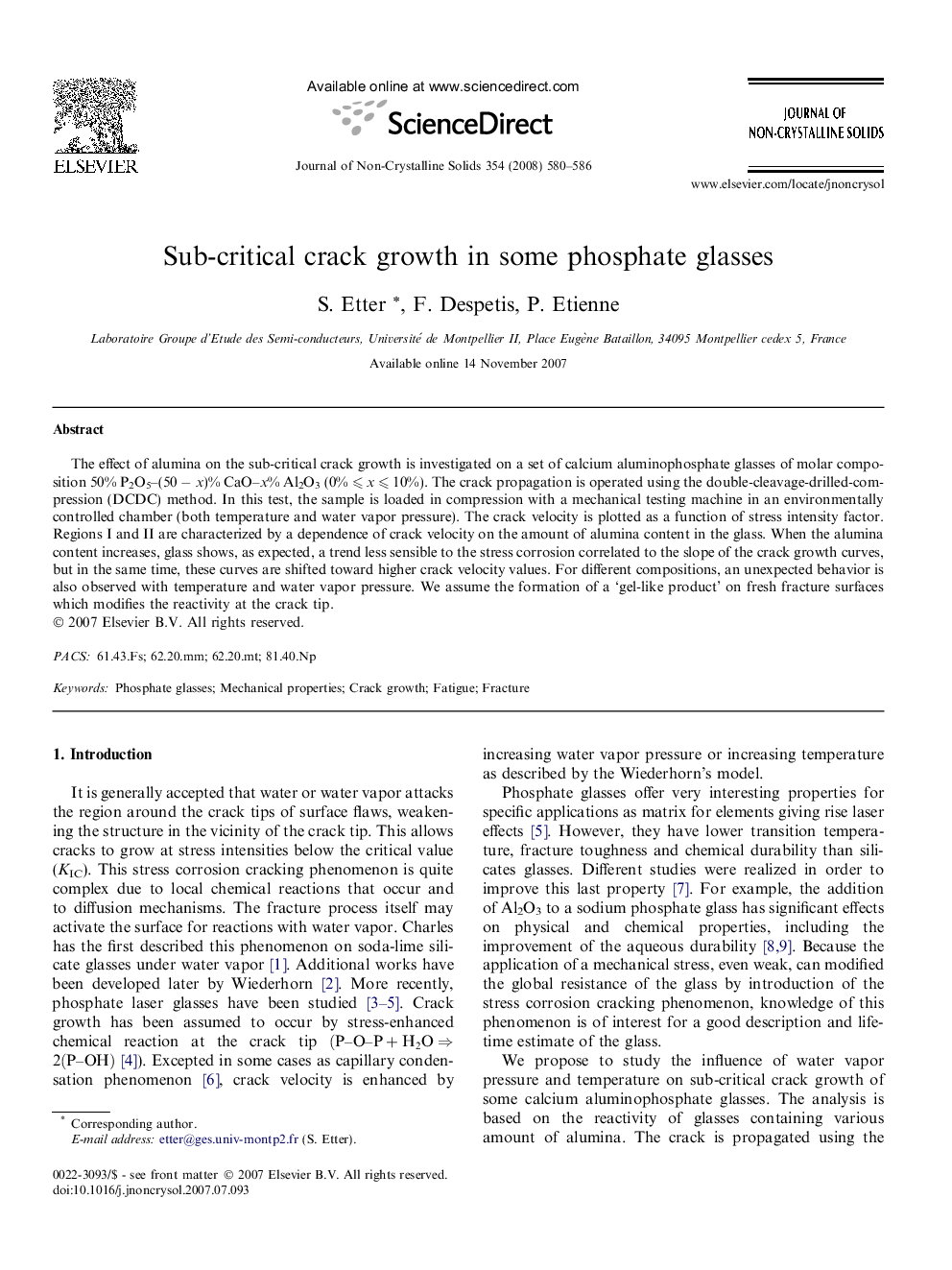| Article ID | Journal | Published Year | Pages | File Type |
|---|---|---|---|---|
| 1485107 | Journal of Non-Crystalline Solids | 2008 | 7 Pages |
The effect of alumina on the sub-critical crack growth is investigated on a set of calcium aluminophosphate glasses of molar composition 50% P2O5–(50 − x)% CaO–x% Al2O3 (0% ⩽ x ⩽ 10%). The crack propagation is operated using the double-cleavage-drilled-compression (DCDC) method. In this test, the sample is loaded in compression with a mechanical testing machine in an environmentally controlled chamber (both temperature and water vapor pressure). The crack velocity is plotted as a function of stress intensity factor. Regions I and II are characterized by a dependence of crack velocity on the amount of alumina content in the glass. When the alumina content increases, glass shows, as expected, a trend less sensible to the stress corrosion correlated to the slope of the crack growth curves, but in the same time, these curves are shifted toward higher crack velocity values. For different compositions, an unexpected behavior is also observed with temperature and water vapor pressure. We assume the formation of a ‘gel-like product’ on fresh fracture surfaces which modifies the reactivity at the crack tip.
